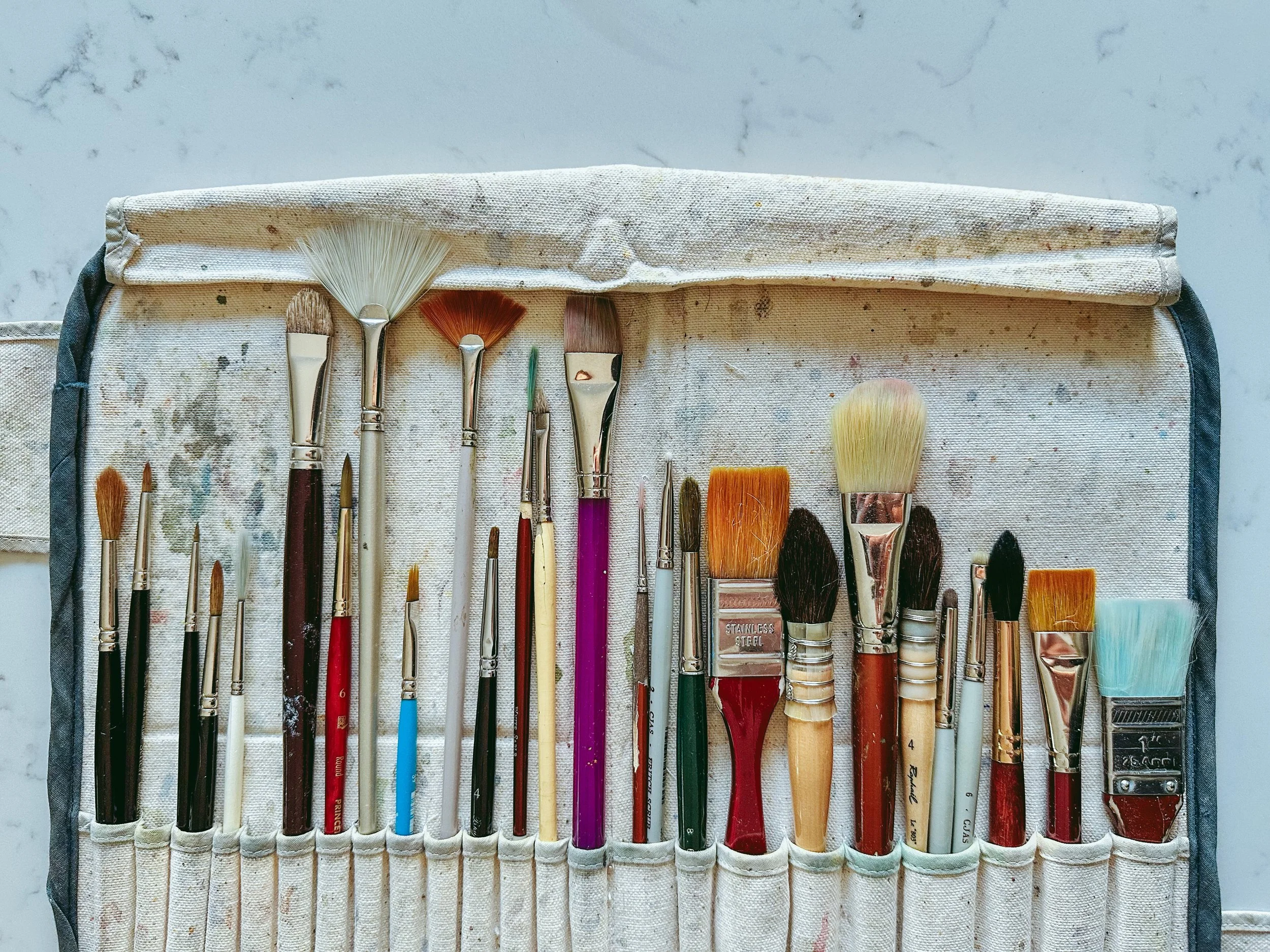Which Watercolor Brush to Use
Painting in most mediums involves mixing colors and painting with different sized brushes to yield different results. With watercolors, however, there is a whole variety of brushes that produce endless outcomes and possibilities in your paintings. I began my painting career with my basic brushes and as I became more comfortable over time, I experimented more and more. I learned how changing a brush size or style altogether could create the exact depth or texture I was looking for. It took a lot of trial and error but I finally discovered the brushes that I loved the most which would give me the best results for what I was looking to accomplish. Keep reading for a breakdown of each brush type to help make the variety a little more manageable next time you sit down to paint.
Round Brush
A go-to brush, round brushes of any size are your “typical” brush to paint with and a good place to start for beginners. They’re considered 2-in-1 because they have a pointed tip with a larger body, meaning you can easily create larger strokes by applying more pressure or finer strokes by angling the brush up more and pressing lightly.
Detail Brush
This tiny tip allows you to create the smaller details of a painting. I love to use them when painting the eye detail in my pet portraits or the dollhouse-size details on my home portraits.
Rigger Brush
Similar to a detail brush in size, a rigger gives you a long, slender brush tip that holds more water than others because of its length. It’s great for creating long, fine lines without having to reload your brush with water or paint.
Wash Brush
Landscapes and background color are the name of the game for wash brushes. This is absolutely not the brush to use for details but load it up with water and saturate it with color, and you can have a sweeping green landscape or fiery sky in no time.
Mop Brush
Similar to a wash brush, a mop brush is used when you want to cover larger areas with water/paint or dilute a more saturated area of paint by mopping water in and around it.
Fan Brush
This is probably one of the most versatile, yet most difficult to use brushes. Fan brushes are good for many nature-related paintings like trees, grass, and waves. Just be patient with this one because it will take some trial and error to figure out how best to hold and grip this brush.
Filbert Brush
One of my favorite brushes for florals, the filbert brush is a flat brush with a round-shaped tip. When turned on it’s side, it can be used for thinner strokes or my personal favorite use of it is to turn the brush mid-stroke to create a tapered look, perfect for leaves and flower petals.
Dagger Brush
A dagger brush, or an angled brush, is great in any instance where you want straight lines or to paint up to a straight edge. I use it most often when painting the angles of a home in my portraits such as the roofing or siding, without risking overlapping with the sky or background. It is also a great brush for textured leaves.
Sponges
While not technically a brush, I couldn’t achieve most of my trees without them. Sponges are so fun to use and get a little crazy with. They are great for bigger, bushier trees and add a lot of great, natural-looking depth. Sponges hold a lot of paint so always be sure to clean them thoroughly and blot them on paper towels in between use.
As if the list of brush types weren’t enough, you may also want to consider the material that each brush is made of. The hairs of a brush can be made with hog bristles, sable, horse, minks, sheep, squirrel, and more. No, I didn’t just list farm animals. The bristles of a brush are another factor to consider when painting. Personally, I love a horse bristle for washes and rougher-looking strokes. For everything else, sable is the way to go with softer, cleaner brush tips.
Did you find this roundup helpful? Let me know in the comments below and share with someone you think could benefit from this list! For more beginner-friendly content, check out my Watercolor Supplies for Beginners post.










